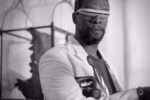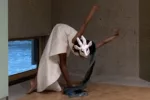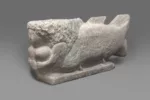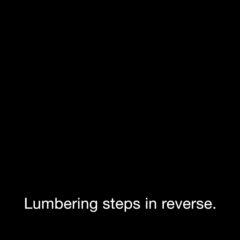[Andrea experiences a two-day multidisciplinary event involving music, visual and performance art, presentations, and discussions centering around notable African-American artwork, thought, and creativity]. — the Artblog editors]
Until this weekend, I’d never experienced crowd fervor aroused for a loftier goal than football. “Carrie Mae Weems LIVE” dramatically changed that. I was challenged, engrossed, stretched, and deeply moved by a showcase of current African-American artists, critics, and scholars. It was a heady experience to be with a majority African-American audience in a major, New York museum for two-and-a-half days that celebrated, discussed and analyzed African diasporic creativity.
High time for this type of program
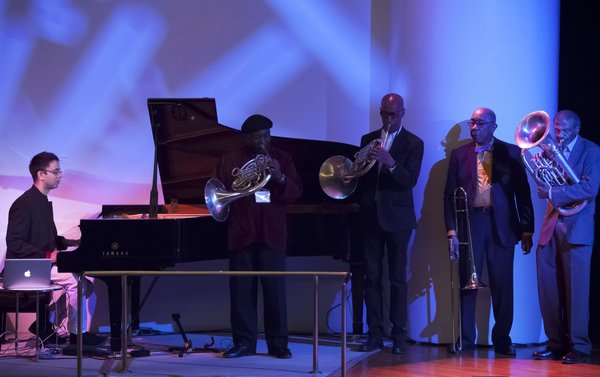
“Carrie Mae Weems LIVE: Past Tense/Future Perfect” coincided with the last weekend of the survey, Carrie Mae Weems: Three Decades of Photography and Video at the Guggenheim Museum of Art, New York. The program was organized by the artist, who worked with writer, performer, and recording artist Carl Handcock Rux, and demonstrated an expansive generosity. Weems and Rux invited more than 50 visual artists, writers, musicians, filmmakers, and multi-disciplinary practitioners, along with cultural critics and scholars, and charged them with talking not about her, but about their own work.
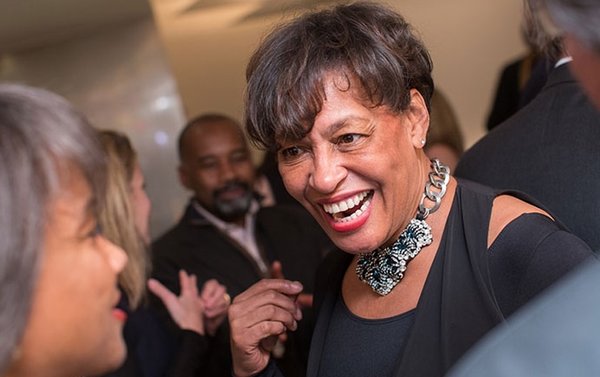
In 2014, an in-depth program centered on African-American culture shouldn’t be unusual in a mainstream New York art museum–but it was, despite every institution’s ritual invocation of “diverse audiences”. It’s about time! The standing-room only event opened with Vijay Iyer leading a moaning, musical lament for Terry Adkins. Then, artists and others began to talk about their work: Walter Hood showed the contemplative mounds he designed to mark a forgotten free-black cemetery, excavated at the University of Virginia; choreographer Camille A. Brown transformed herself into a young girl exploring her protean character; Maaza Mengiste read from her searing fictional account of the scenes behind erotic postcards of Ethiopian women, photographed by their Italian captors; and Thelma Golden, director of the Studio Museum in Harlem, recounted the impact of the still-potent Whitney exhibition, Black Male, which she organized as a young curator, 20 years ago.
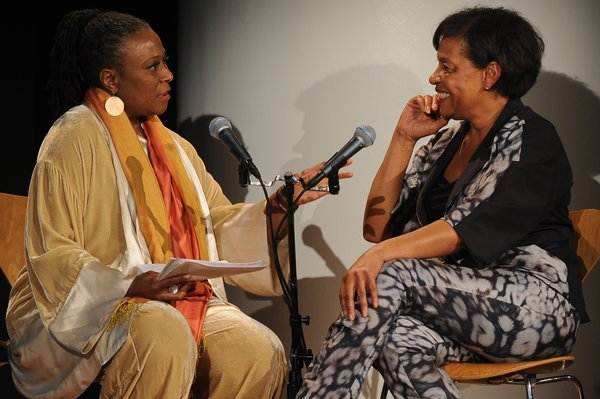
The remarkable lineup of participants spanned three generations, including Elizabeth Alexander, John Ankomfrah, Barbara Chase-Ribaud, Okwui Enwezor, Lyle Ashton Harris, Julie Mehretu, and many, many others. In her opening remarks, Weems invoked the “specter and spectacle of blackness,” noting that artists of color are still outside the mainstream; this weekend gathering, she said, was a time to ask questions. Rux, in a resonant baritone, pronounced the Peter B. Lewis Theater, in which the events were held, “a sacred space”. And sure enough, on the final day, Sandra Payne, an artist sitting next to me, said she’d been Tweeting about the weekend, calling it “The Church House of Sister Carrie Mae Weems”. If museums are the cathedrals of our day, this weekend expanded the Guggenheim’s reach to an enlarged, ecumenical ministry. Enough rhetoric–this was the real thing.
Standout performances and presentations
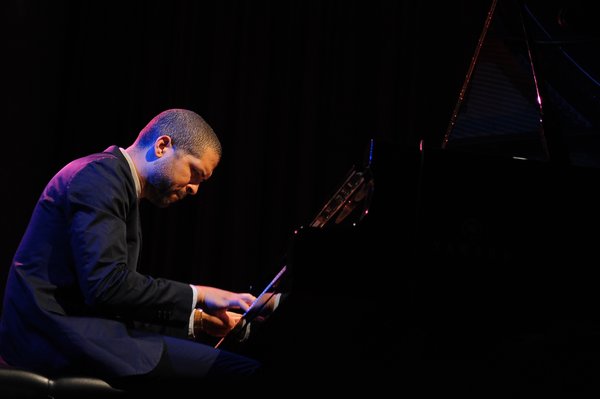
The event began and ended with music: first, the opening tribute to the late Terry Adkins, and last, a performance of work composed by Craig Harris–a fusion of jazz and classical traditions, held within the exhibition galleries. Each evening was capped with music as well, with long sold-out tickets: Jason Moran and The Bandwagon on Friday, the Geri Allen Trio on Saturday. It’s impossible to cover the range of artists and ideas, but among the standouts were Marinella Senatore, who showed her public participation projects, which activate communities to organize performances entirely written, performed, and technically supported by amateur volunteers; Mark Anthony Neal’s rapid-fire disquisition on the possibility that slow reflection might offer more hope for black freedom than Black Twitter; Maren Hassenger, walking off the stage and perambulating through the audience, enacting her definition of sculpture as movement in space; and a full-bodied, vernacular presentation by museum educator Sandra Jackson-Dumont, who used humor and pantomime to trace her evolving conception of beauty from childhood to maturity.
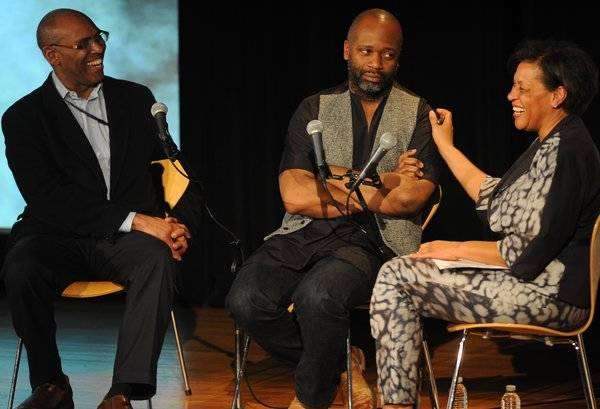
The Guggenheim’s rotunda had surely never before been filled with a spiritual procession like Sunday morning’s, led by María Magdalena Campos-Pons, along with composer and interdisciplinary artist Neil Leonard. Afro-Cuban musicians entered, initiating an African ceremony of blessing, pouring ritual water into the museum’s central pond, before the procession proceeded up the museum’s ramp and into the exhibition galleries.
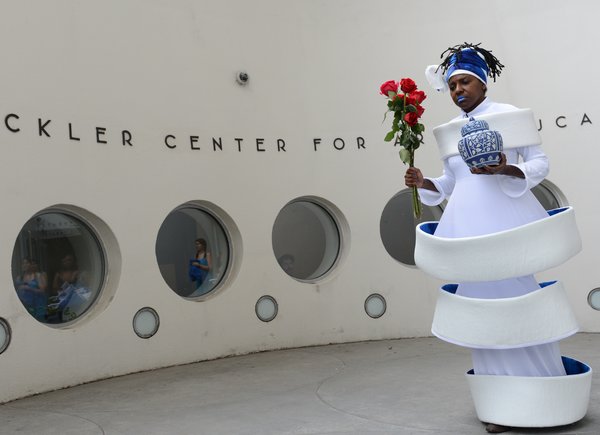
Highlighting progress and challenges still to come
The most senior of the weekend’s artists and presenters all made it clear that when Weems approached them about participating, it was more of a challenge and command than a query; but all acknowledged it a privilege to attend. Carrie Mae Weems was not only a charismatic and generous hostess, role model, and mentor, but a very savvy producer. She saved the final spot for an artist presentation, just before Geri Allen’s performance on Saturday night, for Theaster Gates. Many of the evening’s audience, who had come for the music, were unaware of Gates’ visionary, urban transformation in a benighted neighborhood of South Chicago. They were also new witnesses to his extraordinary charisma, which he has harnessed with such success to create Dorchester Projects and the Rebuild Foundation, leavened by his humor, demonstrated to great effect by Gates’ multilingual switches between street talk and art discourse, art cant and grant proposal jargon.
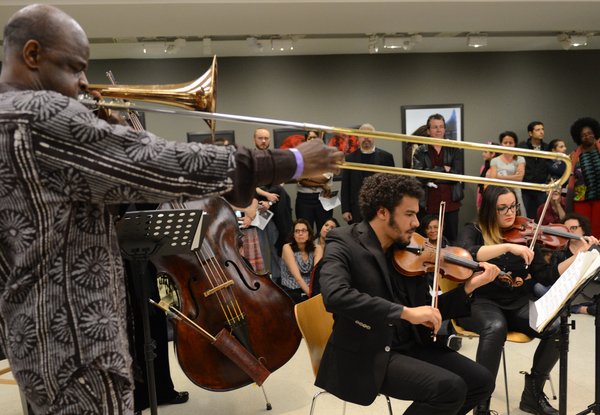
Gates’ presentation was ultimately directed at the artists in the audience. He challenged them to use their creativity, vision, and their privileged positions to work for the greater good of their communities–a challenge to make things happen themselves. Gates clearly feels a calling, and while his rhetoric and style come directly from the powerful evangelism of the African-American church, there was nothing culturally or racially specific in his message. It resonated strongly with this white woman, and is a message that crucially needs to be heard beyond the weekend’s audience.
“Carrie Mae Weems Live” was a major event that will certainly leave its mark on U.S. art’s history. I was very fortunate to be there.


